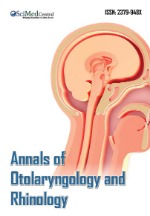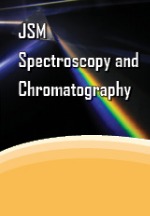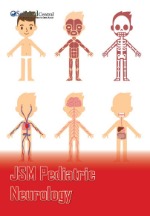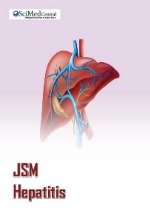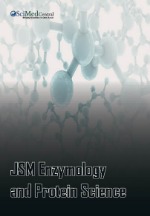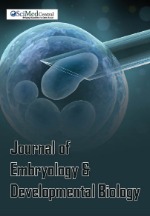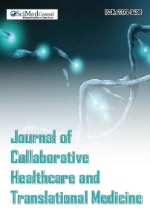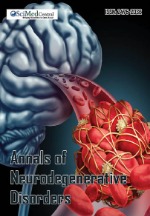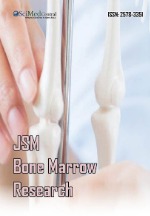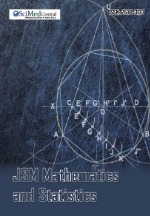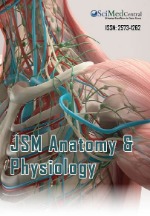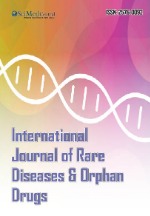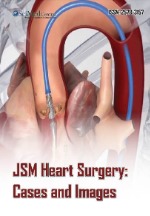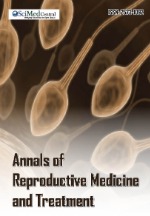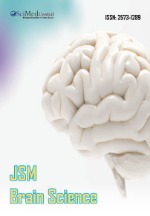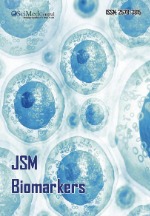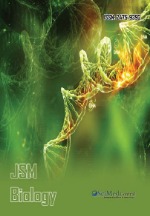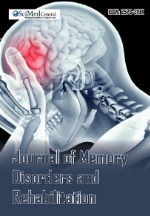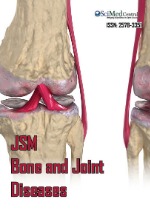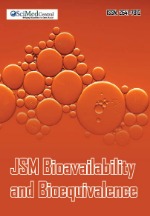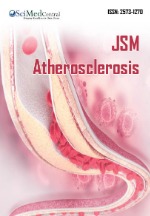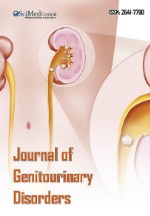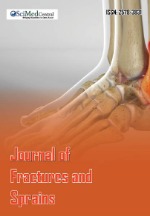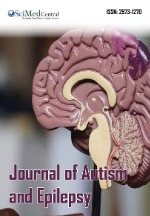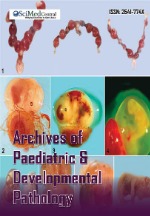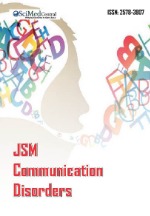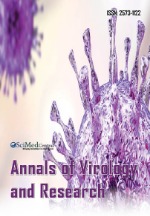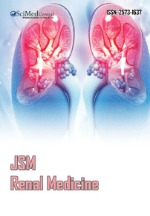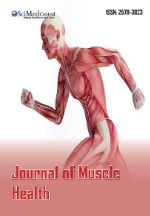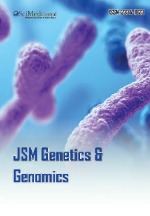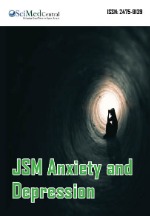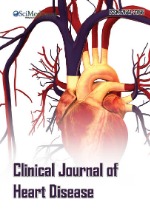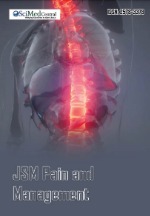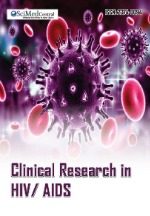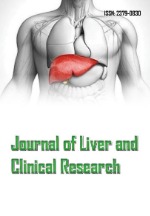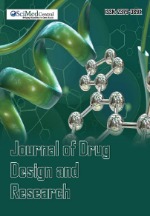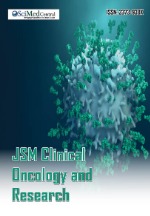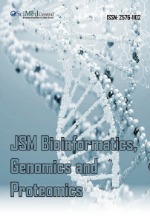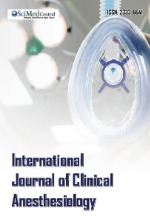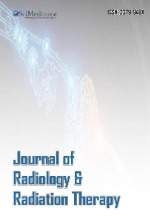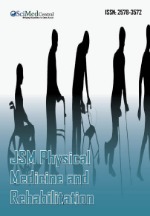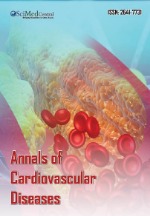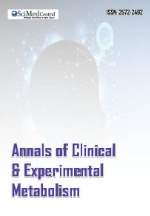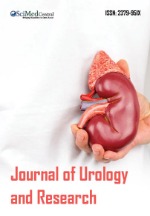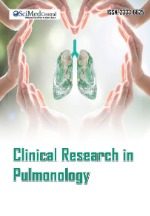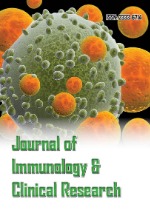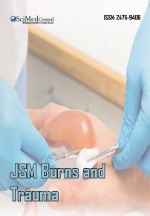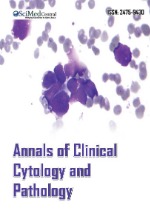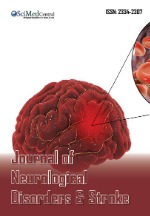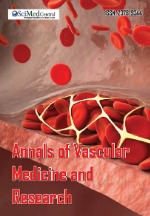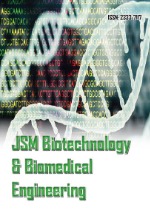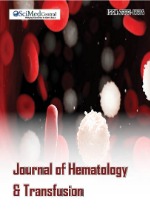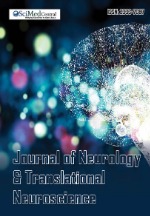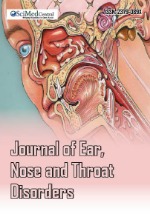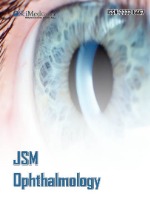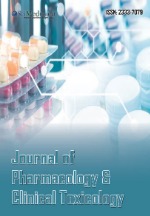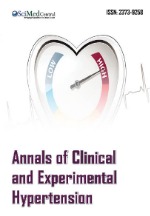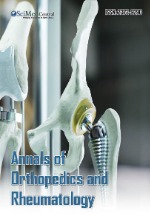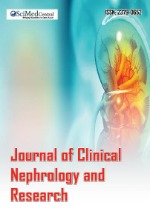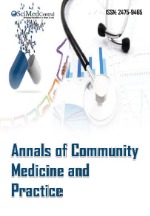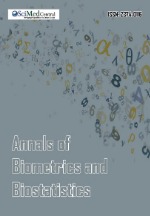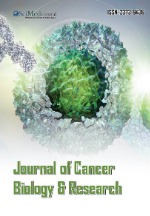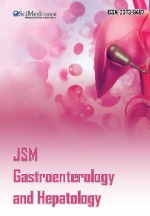Epididymal Metastasis of Intrahepatic Cholangiocarcinoma: A Case Report and Literature Review
- 1. Department of Oncology, Fuling Hospital Affiliated to Chongqing University, People’s Republic of China
Abstract
Primary liver cancer is the sixth most common cancer in the world and the second leading cause of death from cancer
KEYWORDS
- Hepatocellular carcinoma
- Epididymal metastasis
- Case report
CITATION
Zhou M, Huang R, Liu L, Tan Y, Hu X, et al. (2024) Epididymal Metastasis of Intrahepatic Cholangiocarcinoma: A Case Report and Literature Review. JSM Clin Case Rep 12(3): 1243.
INTRODUCTION
Hepatocellular carcinoma is the most common type of primary liver cancer [1]. Intrahepatic cholangiocarcinoma (ICC) originates from the secondary branches of the bile duct and bile duct epithelial cells in the distal liver [2], accounting for less than 5% of primary liver cancer, and its incidence has been increasing in recent years. However, epididymal metastasis of ICC is rare in clinic. Comprehensive literature review reports are as follows.
CASE PRESENTATION
A 49-year-old male patient presented with yellow urine and yellow skin and sclera in October 2021. After admission, abdominal Magnetic resonance imaging Showed a space- occupying lesion in the left lobe and caudal lobe of the liver, which was considered to be a malignant tumor. The common bile duct was involved, the left hepatic vein and the left branch of the portal vein were involved, and the superior diaphragmatic, hepatic hilum and retroperitoneal lymph nodes were considered to be metastases. On November 1, 2021, percutaneous transhepatic cholangiography and drainage (PTCD) and biliary stenting were performed. Computed Tomography (CT)-guided liver biopsy was performed, and the postoperative pathological biopsy results showed adenocarcinoma, moderately differentiated, considering the origin of bile duct. Immunohistochemical results: HBsAg (+), Hepa (-), CK19 (+), GPC-3(-), CD34 (+ blood vessel). Ki67 (60%), the EMA (+), CEA), GS (-), CDX - 2 (+), Arginase (-), HSP70 (+), AFP (-), P53 (+), MUC (+) - 1, CK7 (+), CK20 (-).
The patient was treated with toripalimab combined with lenvatinib 8mg. On January 11, 2022, the imaging examination showed that the intrahepatic lesions were progressive. On January 15, February 7, and March 3, 2022, the patients were treated with Gemox regimen chemotherapy (gemcitabine 1500mgd1+ oxaliplatin 200mgd1). On March 24, 2020, MRI of the patient’s abdomen revealed large patchy hypodense lesions in the left liver, scattered small nodules in the right liver, cirrhosis, and splenomegaly [Figure 1].
Figure 1: Abdominal MRI on March 24, 2022: large patchy hypodense foci in the left liver
Toripalimumab combined with Gemox regimen was performed on 2022-3-27, 2022-4-2, and 2022-5-10. Nausea and vomiting occurred repeatedly after chemotherapy. Imaging examination showed biliary obstruction on 2022-06-12, and biliary PTCD drainage and biliary stent were performed. The patients were treated with toripalimab combined with lenvatinib at 2022-7-24, 2022-08-16, 2022-9-8, 2022-9-9, 2022-10-20 and 2022-11-10. On November 31, 2022, the abdominal CT indicated that the lesion in the right liver had increased in number and size, suggesting disease progression.
The NGS detection report showed that c-MET had undergone amplification. Based on the results of drug sensitivity tests, the patient was treated with oral “Crizotinib” combined with Tremelimumab. On January 10, 2023, the patient experienced abdominal distension. The ultrasound indicated that there was a large amount of fluid in the peritoneal cavity. The abdominal CT indicated that there were more and larger metastatic lesions in the right liver than before; the lymph nodes in the liver- gastric interspace were enlarged; the peritoneum in the right upper abdominal region was thickened and partially showed nodular changes, suggesting peritoneal metastasis [Figure 2].
Figure 2: Abdominal CT on January 17, 2023:1. Multiple metastases in the right liver were larger than before; 2. Enlarged lymph nodes in the liver-tail gastric space; 3. Increased peritoneal effusion; 4. Left adrenal gland enlargement.
The patient’s disease progression was assessed, and peritoneal fluid drainage and the administration of albumin to correct hypoproteinemia were given as symptomatic treatment. The pathological results of the peritoneal fluid showed the presence of malignant tumor cells, which, combined with the patient’s history and immunohistochemistry, suggested intrahepatic cholangiocarcinoma. Tumor necrosis factor and cisplatin were administered via peritoneal dialysis, but the patient’s abdominal distension did not improve. After consulting with a hospital in Beijing, the patient was administered oral treatment of “pomalidomide + cabozantinib + pembrolizumab”. On February 6, 2023, the patient presented with left testicular swelling and pain. A color ultrasound examination revealed the following: 1. Mild swelling and edema of the left epididymis and spermatic cord, with impaction of the left testicle (with some residual blood flow signal). Following an urgent urology consultation on February 7, 2023 at 01:25 am under spinal anesthesia, a left testicular excision was performed. The postoperative pathological diagnosis indicated: 1. Moderately differentiated adenocarcinoma in the epididymis.2. No cancerous tissue found in the left testicle.3. Chronic inflammation at the end of the spermatic cord without cancerous tissue. Immunohistochemistry results showed: CA19-9 (positive), Calretinin (±), CD34 (negative), CDX2 (weak positive); CEA (partially positive), CK20 (negative), CK7 (positive), D2-40 (negative), Ki-67 (hot spot area about 20%+); NapsinA (-); P53 (normal staining), PAX8 (-), TTF1 (-), Villin (+), Vinentin (-), WT1 (-), CD10 (-), IMP3 (+), PSA (-) [Figure 3].
Figure 3 A: organizational form slice (HE, 200 x); B ~ F: CK7, IMP3 respectively, VIM, Villin, Ki - 67 positive (EnVision, 200 X)
On February 16, 2023, the blood routine test showed: white blood cell count of 0.72×109/L, platelet count of 30×109/L, and hemoglobin of 86g/L.
On February17th, the patient developed high fever with a peak temperature of40°C.Treatment with imipenem was initiated to address infection; however, at10:20, the patient suddenly experienced seizures accompanied by impaired consciousness and unresponsiveness to verbal commands. A prompt resuscitation effort commenced immediately. By 11:00, vital signs had not improved, and unfortunately, the patient was declared deceased.
Past history: He had a history of hepatitis B and was currently trea.
DISCUSSION
Cholangiocarcinoma is a malignant tumor originating from the epithelial cells of the bile duct system in the liver and gallbladder, which can be divided into intrahepatic cholangiocarcinoma (ICC) and extrahepatic cholangiocarcinoma (ECC) based on its anatomical location. ICC is a malignant tumor that occurs in the epithelial cells of secondary or higher-order bile duct branches, accounting for 15%-20% of primary liver cancer and 20% of cholangiocarcinoma [3]. The incidence rate of ICC is higher in Asia, especially in China and Japan. The peak incidence age is 55-75 years old, with a male-to-female ratio of approximately 2:3 [4]. ICC is a highly malignant tumor that usually occurs in the background of chronic inflammation, leading to bile stasis and bile duct damage. The reported risk factors for its development include fibrotic cystic disease, primary sclerosing cholangitis, intrahepatic cholangiolithiasis, cirrhosis, viral hepatitis, etc. [5,6]. ICC grows in the liver parenchyma and hepatic portal area, with obvious heterogeneity and varying degrees of differentiation in its histopathological features. The main pathological types are adenocarcinoma, squamous cell carcinoma, and adeno squamous carcinoma, with adenocarcinoma being the most common, accounting for over 90% [7]. Clinically, ICC presents with symptoms such as upper abdominal discomfort, fullness or pain, fatigue, decreased appetite, nausea, and weight loss [8]. ICC has a stealthy onset and lacks sensitive detection and diagnostic markers, is heterogeneous, aggressive, and has poor prognosis, making its diagnosis and treatment extremely challenging [9].
Several advanced technologies, including liquid biopsy and intestinal microbiome, are used for the early diagnosis of biliary tumors, but the results still need further validation [10]. Domestic guidelines recommend using carbohydrate antigen 199 and CEA for auxiliary diagnosis and treatment guidance; ultrasound is often used for early screening. Enhanced CT examination can help judge the anatomical relationship between the tumor and surrounding blood vessels and lymph nodes, thereby effectively evaluating the staging of the tumor. MRCP can show the advantage of displaying the relationship between the biliary system and the lesion. PET-CT examination can accurately evaluate the regional lymph nodes and distant metastasis situation, and is used to guide the staging and surgical selection of ICC [11]. Curative surgical resection is the main treatment method for early ICC, and only a few patients can achieve R0 resection. Lymph node metastasis is an important factor affecting the prognosis after ICC surgery, and the scope of lymph node clearance is still controversial [12]. Studies have shown that neoadjuvant chemotherapy may improve the prognosis of ICC [13]. Advanced ICC treatment is mainly targeted and immunotherapy combined with chemotherapy, the chemotherapy regimen of ICC is based on gemcitabine + cisplatin/oxaliplatin (GemCis / Gemox), the median progression- free survival (PFS) is 6-8 months, the overall survival (OS) is 11.7 months [14]. The results of the KEYNOTE-966 study suggest that the median OS of the pembrolizumab + GemCis group is 12.7 months, which is higher than that of the group of single use GemCis (10.9 months) [15]. The TOPAZ-1 study reported the results of degreevalimab monotherapy combined with GemCis regimen in treating advanced ICC in the real world, showing a median PFS of 8.9 months, a median OS of 12.9 months, an ORR of 34.5%, and a disease control rate (DCR) of 87.6% [16]. The results of a single-center, single-arm, phase 2 study suggest a median OS and PFS of 22.5 months and 10.2 months, respectively, and a DCR of 93.3% for tritiumplimab combined with lenvatinib and Gemox regimen in treating advanced ICC [17]. The patient in this case was diagnosed at IIIB stage and underwent treatment with tritiumplimab combined with lenvatinib and Gemox regimen, followed by tritiumplimab maintenance therapy. The patient’s OS was 14 months, which is consistent with the reported results. For the second-line treatment of ICC, genetic testing is recommended to select targeted drugs based on the target, including enasidenib for IDH-1 mutations, entrectinib or larotrectinib for NTRK fusion gene positivity, and futibatinib or pemigatinib for FGFR2 fusion or rearrangement. The NGS results of this patient suggest c-MET amplification, which is rare in ICC, with an incidence of less than 2%, and its activation can promote cancer progression. Tivantinib is a small molecule inhibitor of c-MET tyrosine kinase, and the results of a randomized, double-blind phase III trial (NCT02029157) suggest that Tivantinib did not bring about an OS benefit for MET-high expressing liver cancer patients [18]. Cabozantinib is an active receptor tyrosine kinase inhibitor (TKI) for MET, VEGFR2, FLT3, c-KIT, and RET. In a multicenter phase II trial, cabozantinib showed benefit in treating advanced CCA patients with good safety profile [19]. Combination of cabozantinib with anti-PD1 for ICC enhanced anti-tumor immune efficacy [20]. The patient experienced disease progression after the first treatment with “crizotinib combined with tritium” and did not respond to treatment. After treatment with “cabozantinib combined with pembrolizumab and pomalidomide”, the patient experienced thrombocytopenia, neutropenia with infection, and ultimately died of septic shock. The patient developed a left testicular metastasis during treatment, which was considered to be possibly related to the left adrenal metastasis, and eventually transferred through the renal vein, the reticulated vein plexus to the testicle, which is a rare metastatic site and metastatic pathway in clinical practice, and is difficult to detect in the early stage and prone to misdiagnosis. After the diagnosis was confirmed, palliative radiotherapy was given to improve the patient’s survival rate. This case indicates that whole-genome analysis is important for the treatment decision of metastatic cancer patients, and for MET-amplified ICC patients, the prognosis is poor, and the combination of c-MET inhibition with immunotherapy may be an effective treatment strategy.
REFERENCES
- Zhang Y, Rumgay H, Li M, Cao S, Chen W. Nasopharyngeal Cancer Incidence and Mortality in 185 Countries in 2020 and the Projected Burden in 2040: Population-Based Global Epidemiological Profiling. JMIR Public Health Surveill. 2023; 9: e49968.
- El-Diwany R, Pawlik TM, Ejaz A. Intrahepatic Cholangiocarcinoma. Surg Oncol Clin N Am. 2019; 28: 587-599.
- Sirica AE, Gores GJ, Groopman JD, Selaru FM, Strazzabosco M, Wei Wang X, et al. Intrahepatic Cholangiocarcinoma: Continuing Challenges and Translational Advances. Hepatology. 2019; 69: 1803-1815.
- Sirica AE, Strazzabosco M, Cadamuro M. Intrahepatic cholangiocarcinoma: Morpho-molecular pathology, tumor reactive microenvironment, and malignant progression. Adv Cancer Res. 2021; 149: 321-387.
- Esnaola NF, Meyer JE, Karachristos A, Maranki JL, Camp ER, Denlinger CS. Evaluation and management of intrahepatic and extrahepatic cholangiocarcinoma. Cancer. 2016; 122: 1349-1369.
- Ejaz A, Cloyd JM, Pawlik TM. Advances in the Diagnosis and Treatment of Patients with Intrahepatic Cholangiocarcinoma. Ann Surg Oncol. 2020; 27: 552-560.
- Oliveira IS, Kilcoyne A, Everett JM, Mino-Kenudson M, Harisinghani MG, Ganesan K. Cholangiocarcinoma: classification, diagnosis, staging, imaging features, and management. Abdom Radiol (NY). 2017; 42: 1637-1649.
- Hamaoka M, Kozaka K, Matsui O, Komori T, Matsubara T, Yoneda N, et al. Early detection of intrahepatic cholangiocarcinoma. Jpn J Radiol. 2019; 37: 669-684.
- Brown ZJ, Hewitt DB, Pawlik TM. Biomarkers of intrahepatic cholangiocarcinoma: diagnosis and response to therapy. Front Biosci (Landmark Ed). 2022; 27: 85.
- Muraki R, Morita Y, Ida S, Kitajima R, Furuhashi S, Takeda M, et al. Phosphatidylcholine in bile-derived small extracellular vesicles as a novel biomarker of cholangiocarcinoma. Cancer Med. 2023; 12: 13007-13018.
- Hu Zhiliang, Xue Hui, Wang Kui. Interpretation of key points of the guidelines for the diagnosis and treatment of intrahepatic cholangiocarcinoma. J Hepatobiliary Surg. 2023. 31: 245-248.
- Sposito C, Ratti F, Cucchetti A, Ardito F, Ruzzenente A, Di Sandro S, et al. Survival benefit of adequate lymphadenectomy in patients undergoing liver resection for clinically node-negative intrahepatic cholangiocarcinoma. J Hepatol. 2023; 78: 356-363.
- Medin CR, Maithel SK. Neoadjuvant therapy trials in biliary tract malignancies. J Surg Oncol. 2022; 125: 84-88.
- Chun YS, Javle M. Systemic and Adjuvant Therapies for Intrahepatic Cholangiocarcinoma. Cancer Control. 2017; 24: 1073274817729241.
- Kelley RK, Ueno M, Yoo C, Finn RS, Furuse J, Ren Z, et al. Pembrolizumab in combination with gemcitabine and cisplatin compared with gemcitabine and cisplatin alone for patients with advanced biliary tract cancer (KEYNOTE-966): a randomised, double-blind, placebo- controlled, phase 3 trial. Lancet. 2023; 401: 1853-1865.
- Rimini M, Fornaro L, Lonardi S, Niger M, Lavacchi D, Pressiani T, et al. Durvalumab plus gemcitabine and cisplatin in advanced biliary tract cancer: An early exploratory analysis of real-world data. Liver Int. 2023; 43: 1803-1812.
- Shi GM, Huang XY, Wu D, Sun HC, Liang F, Ji Y, et al. Toripalimab combined with lenvatinib and GEMOX is a promising regimen as first-line treatment for advanced intrahepatic cholangiocarcinoma: a single-center, single-arm, phase 2 study. Signal Transduct Target Ther. 2023; 8: 106.
- Kudo M, Morimoto M, Moriguchi M, Izumi N, Takayama T, Yoshiji H, et al. A randomized, double-blind, placebo-controlled, phase 3 study of tivantinib in Japanese patients with MET-high hepatocellular carcinoma. Cancer Sci. 2020; 111: 3759-3769.
- Kato N, Kudo M, Tsuchiya K, Hagihara A, Numata K, Aikata H, et al. Cabozantinib in Japanese patients with advanced hepatocellular carcinoma: Final results of a multicenter phase II study. Hepatol Res. 2023; 53: 409-416.
- Esteban-Fabro R, Willoughby CE, Piqué-Gili M, Piqué-Gili M, Peix J, Torrens L, et al. Cabozantinib Enhances Anti-PD1 Activity and Elicits a Neutrophil-Based Immune Response in Hepatocellular Carcinoma. Clin Cancer Res. 2022; 28: 2449-2460.





